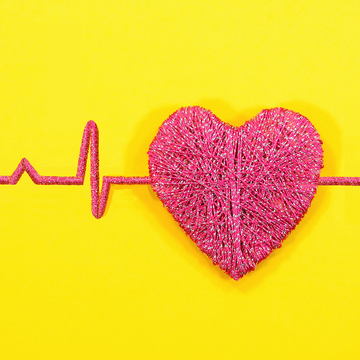Whether you’re in a panic about feeding your newly vegan kid or managing appointments for a parent’s illness, you likely have a lot keeping you up. Add biology, and if you wake up ready to embrace the day, you’re one of the lucky ones.
In your teens and 20s sleep was so easy you could do it, well, with your eyes closed. But with age come saboteurs like hormonal changes and a weakening circadian rhythm, the body’s 24-hour biological clock that governs sleep patterns, appetite, temperature regulation and more. No shock, then, that about a third of U.S. women report rarely or never waking up feeling rested, per a new survey by the American Academy of Sleep Medicine. Sadly, the fallout goes beyond feeling draggy and irritable: Chronic poor sleep drains your brain, strains your heart, messes with your metabolism and may even shorten your life. To help, we asked experts how to handle common sleep conundrums.
My racing mind keeps me awake
“For most of my patients, when they go to bed their brains are so active it’s like the volume is turned up too loud,” says Shelby Harris, Psy.D., a clinical associate professor of neurology and psychiatry at Albert Einstein College of Medicine and author of The Women’s Guide to Overcoming Insomnia. If something is on your mind before you hit the hay, she says — an argument with your spouse, impending layoffs at work, a disturbing article you read — chances are it will resurface in the dead of night. As you toss and turn, thoughts like I’m not sleeping; I can’t afford to be a zombie tomorrow! creep in — and boom, you’ve got sleep anxiety (anxiety about not sleeping).
The fix:
Harris suggests envisioning sleep as a dimmer switch, not an on/off button, and starting a snooze-conducive routine hours before bed. If to-do’s keep you up, write a list five minutes before hitting the sack; a Journal of Experimental Psychology study found that this helped people conk out significantly faster than those who instead wrote about tasks they’d completed. The more detailed the list, the better.
While you’re at it, replace favorite bedtime procrastination techniques like doomscrolling, texting and TV binge-watching with activities that calm body and mind such as reading something soothing (on paper, not a screen); streaming relaxing music; and lighting a candle and practicing a mindfulness exercise such as meditation, guided imagery or deep breathing. All these will slow your breathing and heart rate, calming your nervous system, says Sara Mednick, Ph.D., director of the Sleep and Cognition Lab at the University of California, Irvine, and author of The Power of the Downstate: Recharge Your Life Using Your Body’s Own Restorative Systems . If you find yourself awake again after dozing off, dip into your calming-activities arsenal. Avoid checking the clock or any wearable sleep tracker, as doing so will likely just trigger sleep anxiety.
If all else fails, “When you start to notice that you’re frustrated or trying to force sleep to happen, or that your brain is just on fire, that’s the signal to get out of bed” and do something calming in dim light until drowsiness hits, Harris says.
I wake up with a headache
Morning headaches and daytime fatigue are red flags for obstructive sleep apnea (OSA), a condition that causes breathing to stop and restart dozens of times a night, says Kuljeet Gill, M.D., a neurologist and sleep medicine specialist at Northwestern Medicine Central DuPage Hospital in Winfield, IL. OSA is usually associated with men who snore, snort and gasp their way through the night, but 20% of women have it — and not all people with OSA snore. The risk rises in the years leading up to menopause, when estrogen and progesterone, which have a protective effect on lungs and airways, fluctuate and dwindle, Dr. Gill says.
The fix:
Your body is hinting that something is off-kilter and you should see a doc. Ninety percent of women with OSA don’t know they have it, so if you regularly wake up with a pounding headache or you feel drained throughout the day, Dr. Gill recommends scheduling a sleep study — at home or overnight in a sleep lab. Apnea is treatable, but left undiagnosed it heightens the risk of heart disease, high blood pressure, depression and more.
Hot flashes — need I say more?
Eighty percent of women experience hot flashes as they ride the hormonal roller coaster through perimenopause and beyond. These spontaneous combustions result when fluctuating or persistently low estrogen levels cause the body’s internal thermostat to malfunction, says Sharon Malone, M.D., the chief medical adviser for Alloy Women’s Health and the author of Grown Woman Talk. The hellish bouts can include a heart beating like that of a jackrabbit, a 10K run’s worth of sweat and sometimes a sense of impending doom.
The fix:
Moisture-wicking “cooling” pajamas and sheets should be in your immediate future. But while these can make night sweats more tolerable, they “don’t treat the root cause,” Dr. Malone says. What does? Estrogen-containing hormone treatments or low-dose contraceptives, which she estimates bring relief to 90% of women and are widely considered safe for most who have hot flashes. (Fun fact: The amount of estrogen in menopausal hormone therapy is half to a quarter of the dose in most common oral contraceptives.) Certain antidepressants and herbal supplements may help too. Research also shows that exercise can improve thermoregulatory control and, as a result, reduce hot flashes.
I constantly have to get up to pee
Two-thirds of women over 40 wake up at least once a night with that dreaded gotta-go feeling. And you know what happens next: “You check your phone to see what time it is,” Mednick says, “and suddenly your mind is off to the races.”
The fix:
Mednick’s number one way to minimize the need to go number one at night: Limit all liquids starting three hours before bedtime to give your bladder an overnight break. That includes alcohol, which many women use as a sleep aid without realizing that it’s a bladder irritant as well as a diuretic, spurring excess urine output. Asking your liver to metabolize rosé when it’s meant to be in rest mode also lowers restorative sleep.
If you awaken, don’t touch that light switch or phone, which will “wake up the planning, managing, worrying parts” of your brain, says Mednick. Try to maintain a dreamlike state, breathing slowly as you pseudo-sleepwalk to the toilet. Use a warm-tinted night-light to prevent falls.
Ah! Nightmares
Nightmares are common among midlife women, in whom they are often tied to stress, undulating hormone levels and certain medications including antidepressants, melatonin and other popular sleep aids. Blood pressure drugs are another common culprit, and anecdotal reports are now linking obesity medicines like Ozempic and Wegovy with vivid dreams.
The fix:
Though the recommended dose of melatonin is 1 mg or less, many consumers tend to take “super-doses” like 5, 10 or even 20 mg — potentially contributing to nightmares and other side effects, notes Dr. Gill. It’s possible that a much lower dose will help you sleep without causing nightmares, but always consult a medical professional before taking any sleep aid, advises Dr. Gill. That includes melatonin, CBD, herbal supplements and marijuana. “For any med that affects your nervous system, there can be a wide variance in your reaction,” explains Dr. Gill — something that helps your friend snooze well could cause terrifying dreams for you.
If you don’t think it’s the sleep aids that are causing the bad dreams, you might want to see a sleep specialist. Occasional nightmares are normal, but when they become frequent enough to cause lasting distress or anxiety, treatments may help. The doctor might suggest a technique called Image Rehearsal Therapy (IRT) in which you work with a therapist to rewrite recurring nightmares using new imagery — say, a threatening individual transforms into a friendly one, or the dark sky over your childhood home turns bright and sunny. “The new script is then mentally rehearsed during waking hours to replace the old, upsetting narrative,” says Harris. With consistent practice, IRT “can reduce the frequency and emotional impact of nightmares.”
My darling partner keeps me up
Are you certain they aren’t saying the same thing about you? One in three Americans accuses their bedmate of slumber sabotage. Still, when no one is waking you up early with their annoying morning-person energy or yanking off the covers at 2 a.m., life is so much better.
The fix:
It’s time to get creative. Some folks initiate “sleep divorces,” a.k.a. sleeping in separate bedrooms: The number of millennials interested in dual primary bedrooms doubled between 2007 and 2018 (from 20% to 40%), per an analysis from the National Association of Home Builders. There’s also the less extreme Scandinavian Sleep Method, which involves co-sleeping with separate comforters: Partner A gets their fluffy duvet, Partner B gets their weighted blanket and when one person rolls themself into a burrito, it doesn’t disturb the other. Mednick is also a fan of earplugs and eye masks to block out partner-related noise (snoring, sleep-mumbling) or light (from their reading or watching TV). Upgrading to a bigger bed may help too, if they kick or flop. If your partner takes offense at change, remind them that it doesn’t need to be permanent and encourage them to give it a shot and see if their own sleep improves in the process.















